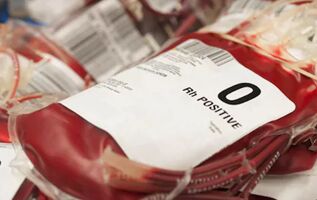研究发现 O型血病人重伤死亡率更高
|
Serious injury patients with this blood type died at nearly three times the rate of patients with others. Your blood type could have serious implications for your chance of surviving a serious injury. Researchers have linked blood type O to substantially higher rates of death from severe trauma in a study of 901 emergency patients. Serious injuries -- those bad enough to kill or cause long-term disability -- killed people with blood type O at nearly three times the rate of those with other blood types, researchers reported in Critical Care.
Previous literature suggests this blood type might put patients at greater risk of hemorrhage, Wataru Takayama, one of the study authors, said in a statement. "Loss of blood is the leading cause of death in patients with severe trauma but studies on the association between different blood types and the risk of trauma death have been scarce," he added. In this study of medical records, 28 percent of O blood type patients with serious injuries died in contrast to 11 percent of those with other blood types. About 45 percent of caucasians, 51 percent of African-Americans and 57 percent of Hispanics are type O, the American Red Cross reports. Researchers think lower levels of a blood clotting agent called von Willebrand factor (vWF) might explain the higher death rates. The team also think more research is needed into the impact of O type blood on emergency transfusion patients. A present, O negative blood is used as a universal blood type. Takayama, who works at Tokyo Medical and Dental University Hospital of Medicine, said: "Our results...raise questions about how emergency transfusion of O type red blood cells to a severe trauma patient could affect homeostasis -- the process which causes bleeding to stop -- and if this is different from other blood types." Like all scientific studies, this research is limited. All patients included were Japanese, for example. More research will be needed to see if these results hold across other ethnic groups, the authors said. |









